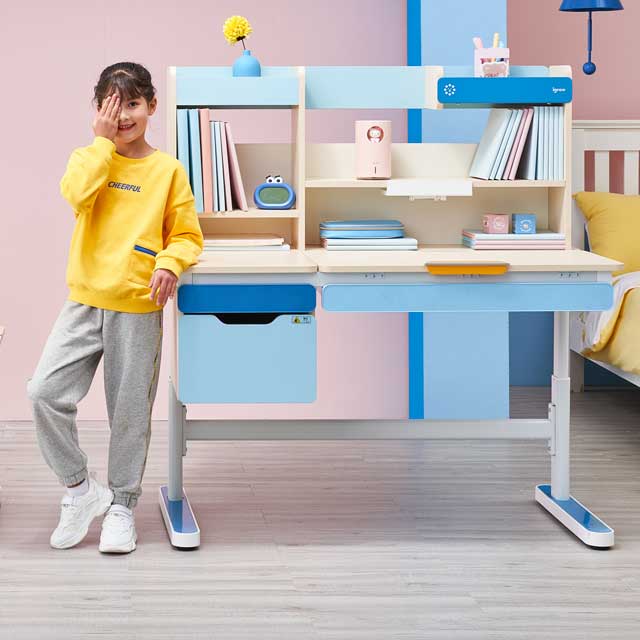**Mycoplasma ELISA Kit Instruction Manual**
This reagent is for research purposes only. It is designed to detect *Mycoplasma bovis* in bovine serum and plasma samples. The assay is based on the double-antibody sandwich ELISA method. Purified anti-*Mycoplasma bovis* antibodies are coated onto a microplate, acting as solid-phase antibodies. These antibodies bind specifically to *Mycoplasma bovis* antigens present in the sample. After washing to remove unbound materials, HRP-conjugated secondary antibodies are added, forming an antibody-antigen-enzyme complex. Following another wash, the substrate TMB is introduced. Under the catalytic action of HRP, TMB turns blue and then changes to yellow when an acidic solution is added. The optical density (OD) at 450 nm is measured using a microplate reader, and the result is compared with a pre-established cutoff value to determine whether *Mycoplasma bovis* is present in the sample.
**Kit Components**
The kit is available in 48-well or 96-well configurations. Each kit includes:
- 1×48 or 1×96 enzyme-labeled microplate
- 2 sealing films (for 48-well) / 2 sealing films (for 96-well)
- 1 sealed bag
- 1 negative control (0.5 ml × 1 bottle)
- 1 positive control (0.5 ml × 1 bottle)
- 1 enzyme standard reagent (3 ml × 1 bottle or 6 ml × 1 bottle)
- 1 sample diluent (3 ml × 1 bottle or 6 ml × 1 bottle)
- 1 developer A (3 ml × 1 bottle or 6 ml × 1 bottle)
- 1 developer B (3 ml × 1 bottle or 6 ml × 1 bottle)
- 1 stop solution (3 ml × 1 bottle or 6 ml × 1 bottle)
- 1 concentrated washing solution (20 ml × 20 times or 20 ml × 30 times)
All components should be stored at 2–8°C.
**Sample Preparation and Handling**
1. **Serum**: Allow blood to clot at room temperature for 10–20 minutes, then centrifuge at 2000–3000 rpm for 20 minutes. Carefully collect the supernatant. If precipitation occurs during storage, centrifuge again.
2. **Plasma**: Use EDTA or sodium citrate as anticoagulant. Mix for 10–20 minutes, then centrifuge at 2000–3000 rpm for 20 minutes. Collect the supernatant. Centrifuge again if precipitate forms.
3. **Urine**: Collect using a sterile tube and centrifuge at 2000–3000 rpm for 20 minutes. Carefully collect the supernatant.
4. **Cell culture supernatant**: Collect in a sterile tube, centrifuge at 2000–3000 rpm for 20 minutes. For intracellular components, lyse cells by repeated freezing and thawing, then centrifuge again.
5. **Tissue samples**: Weigh the tissue, add PBS (pH 7.4), homogenize, and centrifuge at 2000–3000 rpm for 20 minutes. Collect the supernatant. Store remaining samples at 2–8°C.
6. **General handling**: Process samples as soon as possible after collection. If not tested immediately, store at -20°C. Avoid repeated freeze-thaw cycles.
7. **Note**: Samples containing NaN₃ cannot be used, as it inhibits horseradish peroxidase (HRP).
**Procedure**
1. Label all microwells. Include 2 negative controls, 2 positive controls, and 1 blank control per plate.
2. Add 50 µL of negative and positive control to respective wells. Add 40 µL of sample diluent and 10 µL of sample to each test well. Gently mix without touching the well walls.
3. Cover the plate and incubate at 37°C for 30 minutes.
4. Prepare washing solution by diluting 30 mL of concentrated washing solution in 600 mL distilled water.
5. Wash the plate 5 times, discarding liquid after 30 seconds each time. Dry thoroughly.
6. Add 50 µL of enzyme-labeled reagent to each well except the blank.
7. Incubate again at 37°C for 30 minutes.
8. Wash as in step 5.
9. Add 50 µL of developer A and 50 µL of developer B to each well. Incubate at 37°C for 15 minutes.
10. Add 50 µL of stop solution to each well to terminate the reaction.
11. Measure OD at 450 nm within 15 minutes of stopping the reaction.
**Result Interpretation**
- **Valid Test**: Positive control OD ≥ 1.00; Negative control OD ≤ 0.10.
- **Cutoff Value**: Cutoff = Mean of negative control + 0.15
- **Negative Result**: Sample OD < Cutoff
- **Positive Result**: Sample OD ≥ Cutoff
**Download**
[Click here to download the Mycoplasma ELISA Kit Instruction Manual](#)
**About Us**
Visit [Shanghai Kamaishu Laboratory Research Reagents Procurement Network](#) for more products and services.
**Share This**
**QR Code**

**Education Equipment Purchasing Network Official WeChat**
Scan to stay updated with the latest industry news and trends.
**Copyright Notice**
This content is provided by China Education Equipment Purchasing Network. Unauthorized reproduction is prohibited. Please cite the source when reusing any material. For copyright inquiries, contact us within two weeks of publication.
Home Study Desk
The height of the elevating study table can be adjusted by itself. For example, when a child is doing homework, he can adjust it to the most comfortable and suitable height according to the height of the child, so that when the child is doing homework, he can avoid hunched over the chest or tilted his head too much. The sitting posture of the child and the use of a desk with a suitable height will have many benefits for the child's sitting posture and physical development after a long time.
Enterprises specializing in the production of intelligent office supplies, using intelligent production, with multi-functionality, electric control of the lifting table control, more intelligent, more accurate, optimize the imperfection of ordinary table defects, it brings high-quality products to users. The sense of experience is a kind of spiritual enjoyment, and it is also a perfect improvement for the technology industry.

Children'S Desk Chair,Drawing Children Study Desks,Ergonomic Home Study Desk,Home Study Desk
Igrow Technology Co.,LTD , https://www.igrowdesks.com
 **Education Equipment Purchasing Network Official WeChat**
Scan to stay updated with the latest industry news and trends.
**Copyright Notice**
This content is provided by China Education Equipment Purchasing Network. Unauthorized reproduction is prohibited. Please cite the source when reusing any material. For copyright inquiries, contact us within two weeks of publication.
**Education Equipment Purchasing Network Official WeChat**
Scan to stay updated with the latest industry news and trends.
**Copyright Notice**
This content is provided by China Education Equipment Purchasing Network. Unauthorized reproduction is prohibited. Please cite the source when reusing any material. For copyright inquiries, contact us within two weeks of publication.